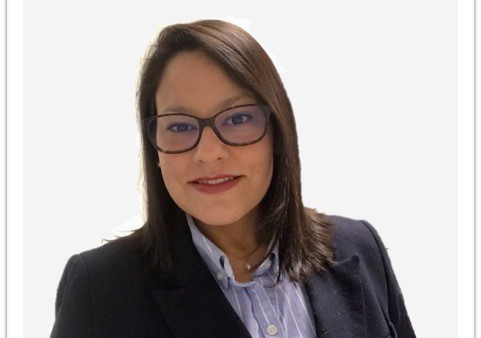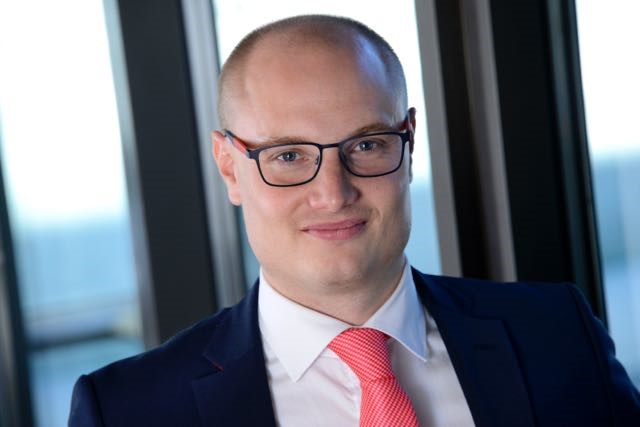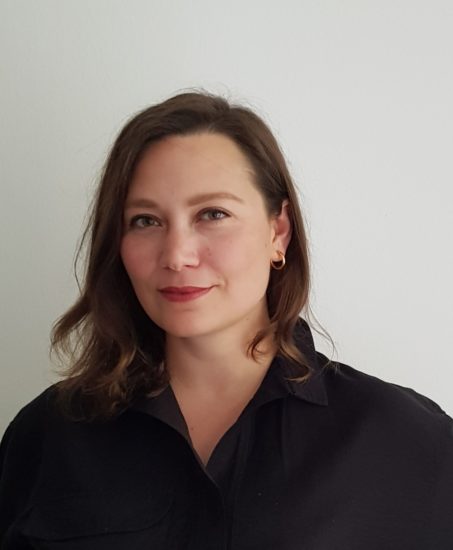IPR Research in Finland

If you are making an IPR Research in Finland and you want to add your information to this page, please fill the form HERE or send the information to the email address below.
Name. title, organization, email, photo
Name of your research, short abstract, other information (research group, links, funding etc.)
Attachments
If you are making an IPR Research in Finland and you want to add your information to this page, please fill the form HERE or send the information to the email address below.
Name. title, organization, email, photo
Name of your research, short abstract, other information (research group, links, funding etc)
Attachments
RESEARCHERS IN FINLAND

Rosa Maria Ballardini
Professor of Intellectual Property Law
University of Lapland
https://research.ulapland.fi/en/persons/rosa-ballardini
Research areas:
Rosa is Professor of IP law and currently also serves as the Vice Dean (research) at the University of Lapland, Faculty of Law. Rosa’s research interests focus on the interface between law (with focus on IP law), technology and sustainability. Currently, she also investigates issues related to the role of empathy in law and decision making. She has written extensively especially in the fields of patent and copyright law, open innovation and open source, as well as IP strategies and IP management in various technological contexts (e.g. software, 3D printing, Artificial Intelligence and industrial internet). Her research approach is multidisciplinary, combining law, technology, business and policy via using different types of methodologies (e.g. traditional legal research methods, empirical methods and design thinking in legal studies).
Rosa is currently leading the research group Law, Technology and Design Thinking at the University of Lapland (https://www.ulapland.fi/FI/Kotisivut/Law,-Technology-and-Design-Thinking-Research-Group).
She is also co-PI of the following multi-disciplinary research projects: – Bio-oils based polymeric composites; value chain from syntheisis to additive manufacturing (ValueBioMat): https://valuebiomat.fi/
Shaping, Fixing and Making Markets via IPR: Regulating Sustainable Innovation Ecosystems (SHARE): https://www2.helsinki.fi/en/beta/shareinnoproject
Education network for automated and connected transport for sustainable cities (ENACT): https://research.ulapland.fi/en/projects/education-network-for-automated-and-connected-transport-for-susta
___
 Dhanay Cadillo Chandler
Dhanay Cadillo Chandler
Post-Doctoral Researcher
University of Turku
https://www.utu.fi/en/people/dhanay-cadillo-chandler
Research areas:
With my research “Creating Incentives and Regulation for New Health Technologies” (herein after InHealth) the aim is to assess the feasibility in creating a side system of incentives -in addition to the current patent system- with the goal of prompting R&D in the field of neglected and tropical diseases (new health technologies within the context of this research). To achieve this, it is necessary to compare other proposed incentive mechanisms, for instance push and pull models, public-private partnerships, and the highly successful EU Orphan drug scheme, to draw on their benefits and challenges. This research develops a side system of incentives based on comparative research and legal dogmatic methodology. To complement the chosen methodologies, it is foreseeable to employ international economic theories and pharma economic merely as principles, and law and economics approach.
___
 Jussi Heikkilä
Jussi Heikkilä
Research Fellow
Jyväskylä University School of Business and Economics
https://converis.jyu.fi/converis/portal/detail/Person/4605825
Research areas:
Economics of patents, economics of innovation, IP statistics
___
 Heidi Härkönen
Heidi Härkönen
Senior researcher, doctoral candidate
University of Lapland, University of Turku
https://www.utu.fi/en/people/heidi-harkonen
https://research.ulapland.fi/en/persons/heidi-härkönen
https://www.linkedin.com/in/heidi-härkönen-28a08655/
Research areas:
My doctoral research “Fashion and copyright: protection as a tool to foster sustainable development” (University of Lapland, defence forthcoming in 2021) is a project that delves into IP protection of fashion designs and how protection and regulation can help to shape the garment industry towards environmentally, socially and culturally more sustainable business practices. Intimacy in data-driven culture (IDA) research project (University of Turku) explores how the concept of privacy is affected by digitalisation. Within IDA, I research e.g. wearable technology in work places, new authorship conventions in the design industry and the elements of public domain.
Research groups:
Intimacy in data-driven culture (IDA), University of Turku, funded by the Academy of Finland Law,
Technology and Design Thinking Research Group, University of Lapland
___
 Tuomas Mylly
Tuomas Mylly
Professor, University of Turku
Co-Director of IPR University Center
https://www.utu.fi/en/people/tuomas-mylly
Research areas:
Intellectual property and constitutionalism, IP and competition law, copyright law, patent law, parallel imports and exhaustion of trademarks, employee inventions.
___

Taina Pihlajarinne
Professor
University of Helsinki
https://researchportal.helsinki.fi/en/persons/taina-pihlajarinne
Research areas:
LL.D Taina Pihlajarinne is a professor of copyright law (Docent of Commercial Law), researching and teaching intellectual property rights. Currently she serves as a vice dean responsible for research at the Faculty of Law. Her research interests are focused on the relationship between sustainability and IPRs and the impacts of digitalization and technological advances on intellectual property rights. Pihlajarinne has been a leader of several research projects, and the received competitive funding with Pihlajarinne as PI altogether exceeds 1,8 million euros since 2012. Her ongoing research projects include a project “Shaping, fixing and making markets via IPR: regulating sustainable innovation ecosystems” (Funded by the Academy of Finland) and a project “Legal aspects of utilisation of AI in news production” (Funded by Helsingin Sanomat foundation).
Research groups:
Pihlajarinne is, inter alia, a member of the research group “Companies, Markets and Sustainability” at the University of Oslo Faculty of Law and a member of the Helsinki Institute of Sustainability Science (HELSUS).
___

Emmanuel Salami
Researcher
University of Lapland
https://research.ulapland.fi/fi/persons/emmanuel-salami
Research areas:
“Data protection and intellectual property”
The research focuses on intersections between data protection and intellectual property law. The importance of the focus areas of this research is the interconnectivity between both fields and the potential implications for manufacturers, end users and even members of the general public who might not actively participate in the development and use of said AI systems. This interconnectivity stems from the fact that an IP law regulatory effort of AI might result in the creation of compliance gaps in respect of data protection law. An example of this can be gleaned from the protection of databases where an author’s IP right in the investment or creativity that has been put into the development of a database might extend in a limited capacity to the (non)-personal data contained in such database.
For instance, Art. 7(2)(a) of the Database Directive (DB Directive) non-substantial extraction and re-utilization of data from a protected database is permissible without the consent of the database owner. The possible protection of data by copyright and trade secrets could also have a similar implication. To be eligible for copyright protection, data will have to meet the originality and authorship eligibility requirements while data would have to be a secret and also be commercially valuable to meet the eligibility requirement for trade secret protection. Other propositions have also been made to protect the right of the data producer. Such non-personal data which are protected by IPR do not fall within the scope of data protection law. It suffices to say that any data that leads or could lead to the identification of data subjects (including pseudonymized data) will fall within the scope of data protection law. This research argues that technological advancements support the re-identification of natural persons from non-personal data thereby potentially subjecting non-personal data protected by IP rights to data protection law. The data protection challenges that could arise from this possibility are highlighted with a focus on robots and autonomous vehicles and the use of AI in medicine/
___

Vilhelm Schröder
Doctoral Candidate, Master of Laws, LLM IP
University of Helsinki
https://www.linkedin.com/in/vilhelm-schr%C3%B6der-25851042
Research areas:
Trade Secrets in European Patent Litigation
___
 Alina Wernick
Alina Wernick
Dr. iur. LL.M.
University of Helsinki
https://researchportal.helsinki.fi/en/persons/alina-wernick
https://www.linkedin.com/in/awernick/
Research areas:
Patent law, Open Innovation, Competition Law, Data governance, Law and Technology, Compulsory licensing, Law and Economics.
2020 – 2023 Long-term Human Rights Risks of Smart City Technologies, University of Helsinki, the Legal Tech Lab, funded by the Kone Foundation, Finland.
Wernick, A 2021, ‘Mechanisms to Enable Follow-On Innovation: Liability Rules vs. Open Innovation Models’, Springer, Cham. https://doi.org/10.1007/978-3-030-72257-9
The patent system is based on “one-patent-per-product” presumption and therefore fails to sustain complex follow-on innovations that contain a number of patents. The book explains that follow-on innovations may be subject to market failures such as hold-ups and excessive royalties. For decades, scholars have debated whether the market problems can be solved with voluntary licensing i.e., open innovation, or with compulsory liability rules. The book concludes that neither approach is sufficient. On the one hand, incentives to engage in open innovation practices involving patents are insufficient. On the other hand, the existing compulsory liability rules in patent and competition law are not tailored to address follow-on innovator’s interests. To transcend this problem, the author proposes a compulsory liability rule against the suppression of follow-on innovation, that paradoxically, fosters early-on voluntary licensing between patent holders and follow-on innovators.
Auri Vainio
vainio@iprinfo.com
+358 3521 486

 -verkkolehti
-verkkolehti